
I’ve made furniture in the past, and still do on occasion, but I do not consider myself a furniture maker. I have made exactly one kind of chair in the past, present and future, but definitely do not consider myself a chair maker notwithstanding being at the halfway point of teaching a six-day Gragg chairmaking workshop in the barn attic. In reality I might just be an old coot with a lot of tools and wood in my dream shop located in Shangri-la.
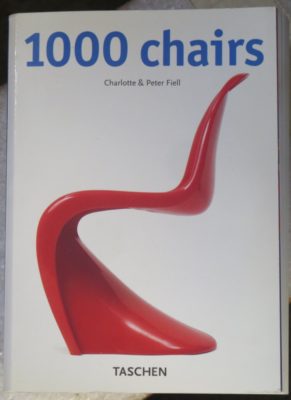
That said, recently while waiting for some wax to melt I pulled down the book 1000 Chairs from the shelf for the first time in many, many years, perhaps fifteen, but certainly not since moving here almost a decade ago.
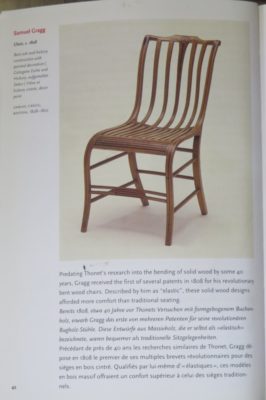
I had not remembered that a Gragg chair was the first offering in the book. It was a bit of a surprise, to be honest. It’s not the top-of-the-line Gragg chair like we are composing this week but is a beauty anyhow.
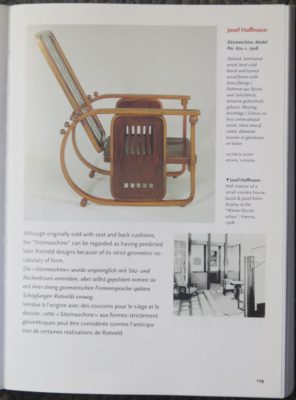
As I browsed through the book I found a number of chairs that intrigued me, but only a few that interested me enough to consider making them. One of the first of these was this recliner by Josef Hoffman, whose vocabulary should be much more widespread throughout the design/craft community.
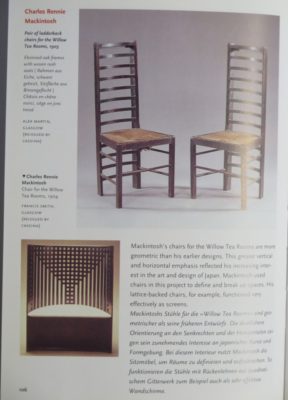
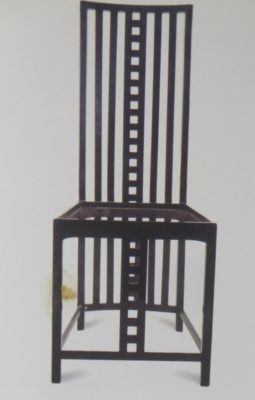
One of my all time favorite designers is Charles Rennie Mackintosh, I find captivating his work in almost any form. I keep thinking that the pair of white wardrobe cabinets from Hill House(?) might make some mighty nice tool cabinets. And, some of his chairs have been eating at me for decades, beginning with the receptionist’s chair and his many iterations of dining chairs. I’ve even got the idea that I could somehow merge the influences of Stickley and Mackintosh into the same KD chair. It would be interesting to try, although some of the later Prairie Style stuff comes pretty close.
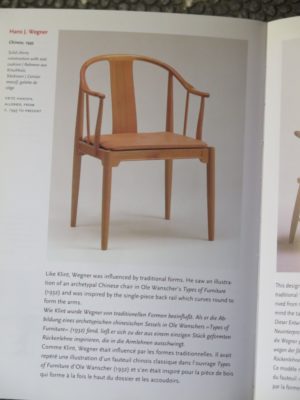
I have always loved classical Chines furniture, none more than the “horseshoe” chair. Hans Wegner’s interpretation of the form is almost to good to believe. But that could be said about much that Wegner designed.

Returning to the theme of (laminated?) bentwood chairs is the chaise from Alvar Aalto. Sublime.
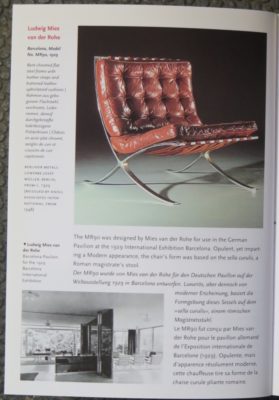
Closing out this romp through chairs I might make some day is Mies van der Rohe’s Barcelona chairs (always presented in pairs). The challenge is, could these metal structural elements be reproduced in bentwood?
Just stuff to think about as I try envisioning cool projects in the future. My mom lived to almost 104 and kept her wits until her last few days, so I figure I might have another 35 years of woodworking left in me.
NB – This is not only my 1,500th(!) blog post over the past 8+ years, it is the longest one I’ve ever written. By far. Normally a post takes me from 30-90 minutes to create, occasionally longer or shorter. For this one, depending on your timekeeping system it took me a) four weeks, b) four months, c) four years, or d) four decades. So which one was it?
The correct answer is, “Yes.”

In order to tell this tale with some completeness I need to give you a tiny bit of background context. (In truth it turned out to be something more than a “tiny bit” but it is far less than a proper detailed exposition. I think that would be too much for 99.8% of you, and since I have about 300 readers that pretty much eliminates everybody — DCW)
To determine the cause of the soup-iness of the batch of Mel’s Wax, it should be the viscosity of a lotion and was instead the viscosity of heavy cream, I needed to go back to the beginning to reflect on the original concept for the formulation. This will be long and winding tale but provides the fullest possible explanation I am able to share about the reason for the batch “failure” (as I said earlier it was not really a failure, it was just not the precise outcome I had expected. In the end it turned out just fine.) I should probably break it up into three or four posts, but I decided to just put in one big steak rather than several smaller burgers. So, settle in with a snack and your preferred beverage for this ride. I don’t think you necessarily need to buckle up, but if a discussion of solvent thermodynamics gets you all worked up into a rave perhaps you need to restrain yourself as well.
BTW This post borrows heavily from the section that has been the bane for the past year of writing A Period Finisher’s Manual. And yes I have finally solved that particular puzzle and am back at work on APFM almost daily. Yup, it has taken me over a year to get a handle on one part of one chapter. Were it not so important to the craft of wood finishing I would not have bothered, but it is and I did.
From the beginning of our careers, even before we met and worked together, Mel and I formulated and mixed our own furniture maintenance polishes because we were not content with the products in the market. The commercially available products often used ingredients we knew a priori to be potentially deleterious to historic finishes, or used ingredients in proportions we thought were not optimal (for the furniture), or were simply too difficult to use.
So, the product Mel finally derived (I withdrew from direct participation fairly early for logistical reasons once we knew the development was on the right track; the easiest way for the project to move forward was for me as Mel’s Supervisor to assign him the task of taking it to fruition with me providing oversight and the occasional observation, review, or suggestion. Participating directly, as a Supervisor and programmatic manager [read: fiduciary] would have been an administrative nightmare) fulfilled splendidly our goals for “the ultimate furniture polish.” I do not believe it to overstate the case when I note that from a formulary’s perspective, it was balancing along a knife’s edge. That balance was lost minutely in mixing this batch of the polish, but that is all it took.
Here were the original goals, which Mel fulfilled brilliantly and deserves all of the credit and the Patents* that were issued.
- The end product was archivally stable.
- The product was chemically benign regarding historic finishes.
- The product was physically benign regarding historic finishes; the product was easy to apply and bring to a high sheen.
- The product was very high performance for both the presentation of the object and its ongoing maintenance.
- The product was easily removed with no damage to the surface from the removal process.
- The production of the polish did not require exotic technology
- The product was safe for the user.
These features are not independent variables per se, no component of any formulation or application is separated from the others, but they are different conceptually and thus I will provide exposition on each one.
Archivally Stable
“Archival” is at best a vague word without objective quantifiable meaning, but for the sake of this discussion simply use it to mean that some material or composition of materials does not degrade unacceptably fast and that any degradation by-products do not become manifest as pernicious actors in the realm of deterioration. That does not mean the word/concept has no utility when formulating a composition or even a practice. For Mel’s Wax the ingredients and their proportions/mixing were chosen with great care, and selected for long-term stability. This has pretty profound influence on the making and shelf-life of the product. Though the primary ingredients of Mel’s Wax (the waxes themselves) have a half-life that is near-infinite within the context of recorded human history, others were selected for the longest possible half-life, such as the exotic emulsifiers. And, the ingredients were selected with essentially zero cost consideration. Think about an old favorite like Murphy’s Oil Soap, which retails for a few dollars a quart. The emulsifiers used in Mel’s Wax, again, selected because of their stability vis-a-vie their degradation curve and chemical neutrality (see below) wholesales for *hundreds of dollars a liter.*
Chemically Benign to Historic Finishes
One of the truths of this particular cosmos is that the Law of Entropy cannot be repealed by even the most highly self-esteemed persons. “Ashes to ashes dust to dust” is not merely funereal homily, it is an inexorable reality in a cosmos governed by the laws of thermodynamics. So, as furniture finishes age they become closer to the “dirt” aspect of the verbiage just cited. As a practical matter this means that historic surfaces and finishes become more chemically imbalanced over time (usually due to UV damage or the imbibing of oxygen) and thus more susceptible to chemicals that impart damage because the chemicals deposited on the surfaces are thermodynamically similar to the surface and will thus impart undue harm to the said surface. This means that we have to maintain as close to a neutral balance or “polarity” for the chemical concoction being deposited on that surface. This, in turn, affects the choice of ingredients to be the most benign possible, which in turn influences the procedures for making Mel’s Wax. Those crazy expensive emulsifiers I mentioned earlier were selected specifically because they are less aggressive in creating the lotion-like polish, and thus less likely to inflict harm on chemically fragile surface. Further, the proportion of the emulsifiers in precisely calculated since excess emulsifier is a vector for accelerated chemical reactions, a/k/a “deterioration.” Also, the selection of the organic solvents used in creating the oil-and-water emulsion were selected for the maximum benign characteristics for aged surfaces.
Physically Benign to Historic Surfaces
There are some fine archival and chemically neutral furniture care polishes on the market in the form of paste waxes. Unfortunately many of these products require sometimes aggressive rubbing of the surface to bring their applications to a conclusion. Whenever you are faced with a physically delicate surface the last thing in the world you want to do is rub it hard to burnish the maintenance coating (paste wax). Given that reality based on what we knew it was pretty apparent that Mel’s Wax would need to be a creamy emulsion requiring very little physical impact on the surface for either application or completion.
High Performance
“High performance” is just another way of saying “It is physically robust and looks good.” It is and it does.
Easily Removable
For long term preservation and care considerations any museum artifact maintenance product must be removable with the minimal physical or chemical impact on the sometimes fragile underlying surface. Mel’s Wax was designed precisely to be removable with non-polar solvents and soft wipes like cotton swabs or lint-free felt.
Easily Produced
This was the point that precluded commercial-scale productions. It is very fussy to make, in fact my experience is that it would be difficult to make in anything larger than a five-gallon batch; I normally make Mel’s Wax just over a gallon at a time. The ingredients must be mixed precisely and with a fairly strict time frame. Further, the thermal ramping (the rate of heating up and cooling down) is a real stinker. Commercial enterprises, used to making home-care products in vats of several hundred gallons at a time, could simply not get it right. Many companies tried, including some you might recognize; they all failed. Instead the protocol Mel derived was a fussy micro-batch process that can go south with just a fraction of a percent of deviation. In that regard it failed the “easy to produce” goal.
Safe to Use
Not incidental to the formulation design is that the end product would not only be benign for the artifact, it would be (comparatively) benign for the user. Yes Mel’s Wax does contain organic solvents that are by definition deleterious to human consumption, but they are not acutely toxic compared to the overall landscape of industrial chemical engineering and formulation. Eating or drinking it would end you up in the emergency room rather than the morgue. As Dixie Lee Ray articulated in the Foreword to her brilliant book Trashing The Planet, under many situations di-hydrogen monoxide (water) is a lethal chemical. Like, for example, if you were to experience extended, intimate and excusive exposure for more than a couple minutes, e.g. unmitigated complete submersion. That would be a fatal incident.
Back to “The Cause”
This, my friends, is here the adventurous rabbit trail of solvent thermodynamics comes into play. As I mentioned earlier the formulation for Mels Wax was a razor’s-edge situation; if any component of the manufacturing was off by just a smidge, whether ingredient, proportion or process, the delicate balance of the formulation would be undone, or at least modified from where it was supposed to end up.
And that is what happened, but not in the way I was expecting. Solving the problem was an energizing exercise in synthetic thinking, combining the phenomenon (that which can be observed) with the noumenon (that which can be imagined).

When I was making this batch I was relying on my old faithful solvent, odorless mineral spirits, from the hardware store. There is nothing wrong with generic or even common ingredients like this provided they are the same thing from the manufacturer every time. I’d had great success with this particular solvent over the years. However, this time when I opened the container and decanted the necessary amount of the solvent into the weighing vessel (the formula is designed to assemble the ingredients by weight, not volume) the solvent coming out of the container was the consistency of chunky sour milk (fortunately it was odorless). Clearly some “shelf life” issue of the solvent and its plastic container was at work here. I tossed all of that and cleaned up to move on to the next gallon jug. Same thing. Repeat and rinse. Same thing. And with that I was out of my trusty tried and true odorless mineral spirits.
No big deal, I just picked up some new solvent, from the same company to (supposedly) the same manufacturing specs, and proceeded as normal. The solvent looked fine, the procedure went smoothly and I set about with other tasks until the polish gelled to the expected creamy lotion viscosity.
I came back in an hour and the polish had not gelled. No reason for hysteria, it as a very warm day and the thermal ramping was just being petulant. I came back in the morning and the gelling was still not to my satisfaction. Hmm, what was going on here? I even refrigerated one jar and it did not thicken to the desired viscosity.

At this point I stepped back from the entire episode for two weeks, just letting the stuff sit on the benchtop of the Waxerie while I cogitated. After those fourteen days I revisited the batch of the polish and noticed something peculiar — there was a stratum of pure solvent at the top of every jar. In a moment I knew what had happened.
The Crystal Set/Key-and-Lock Analogies – The Solubility Parameter
Have you ever wondered why substance A will dissolve in solvent X but not solvent Z? That question is perhaps one of the very most important questions in coatings technology and you would be wise to contemplate it. There is a real answer and I am going to tell it to you in a roundabout fashion. Hey, it’s my blog and I can tell the story any way I want. Hint -it all has to do with interatomic/intermolecular energy matching.
Stick with me now.
When I was a kid I got a crystal set radio, an earth-powered (actually it was the charge from the earth through the grounded radio chassis that made it work) primitive AM radio that allowed me to get the closest radio station to the house. I would spend many evenings listening to that local radio station, and after dark when the locals went off the air I could tune in the station from the next town over. Even though the crystal set had no power source I could listen to broadcast radio. Why? because the crystal of the crystal set allowed the unit to align, or match (receive), the frequency of the signal being broadcast with power being derived from the ground (I am not a radio engineer and did not stay in a Holiday Inn, so cut me some slack. I’m trying to explain a concept, not enter the debate about Marconi vs Tesla vs. Edison). Even with only the nearly unmeasurable electrons flowing through the crystal set it could “dissolve” the radio signals being broadcast because they were matched to each other.
Let me try another analogy.
Assume you come to visit me and my barn is locked (the punch line of my all time favorite joke is, “Assume a can opener.”). Not to worry, you’ve got the biggest honkin’ key known to man in your pocket and you go after the lock on my door. (I am assuming this action is done with my permission or you would have likely suffered a less beneficial outcome). Is this going to work, are you going to get in? Probably not. Why? Because the configuration (the energy) of the key does not match the configuration (the energy) of the tumblers in the lock.
And that my friends is why the polish was soupy. Let me explain.

The “solubility parameter” is the aggregate of (at least) three fractional components, which are in turn very specific intermolecular energy values. We use a graphical tool called the Teas Diagram to visually plot out the dissolving characteristics of both solvents and solutes, although this is an incomplete tool for selecting ingredients in a finish formulation. I discuss this at some length in A Period Finisher’s Manual.
The formula for Mel’s Wax depends on an organic solvent blend of a particular energy balance or “polarity” in order to walk the razor’s edge and fulfill all the preferences described above. To work perfectly the energy holding the solvent blend together (the key) had to match the energy holding the ingredients together (the lock) precisely — not perfectly — in order to accomplish the end point we wanted. My old dominant solvent had the exact correct energies to match the ingredients were were putting into solution in this particular operation. This phenomenon is called the “solubility parameter” as it is literally the aggregation of the interatomic and intermolecular electrical forces holding everything together, at least in the universe of solutes and solvents. Often it is reduce to the verbal shorthand of “like dissolves like.”
Yes, there are solvents for Mel’s Wax that could do the dissolving more efficiently than others. Solvent/solute compatibility is a range not a fixed point since no solute or solvent is 100% a pure single molecular content, and within one particular range we got the desired outcome. Was this solvent blend the “perfect” one to create the solution? No, because perfect solvation was not the preferred outcome since that “perfect” solvent blend would not fulfill the previously stated goals. For that we needed a milder (less polar) solvent blend. As I said the solubility parameter allows for a range of options to accomplish similar goals and characteristics.
Getting back to the original issue, why was this batch of polish soupy? Because even though the new solvent as ostensibly identical or similar to the previous solvent (it was similar but not identical) and still well within the “safe” range or creating our archival polish, it was just enough different as to perform more efficiently as a solvent. In short, each unit of solvent dissolved more of the polish ingredients than the previous solvent, so less of the new solvent was needed to accomplish the task of doing the dissolving. In a normal solvent/solute solution this is usually no big deal, the solution is just a tiny bit more diluted than would otherwise be expected. But, in a two phase system like an emulsion combining an oily fraction with a watery fraction even minute deviations can impart huge differences.
In the end, the polish was soupy because there was excess solvent that had nothing to do but sit around and be liquid adjacent to the two phase emulsion. Yes I could force it to go into the emulsion but it would not stay there. As I showed last time the performance of the polish was unaffected. It was just soupy, that’s all.
But I didn’t want soupy so stay tuned for the next episode of As The Polish Turns to see how I responded to the problem.














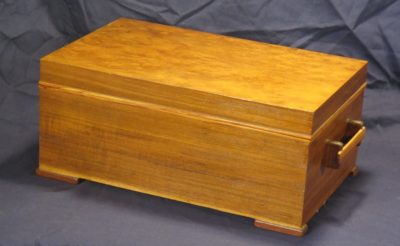
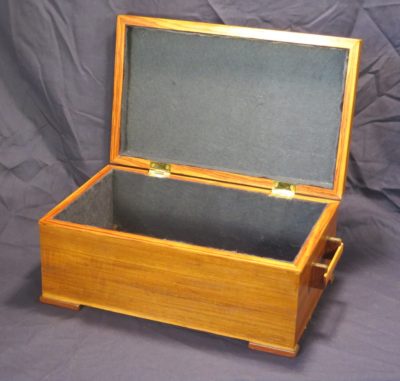
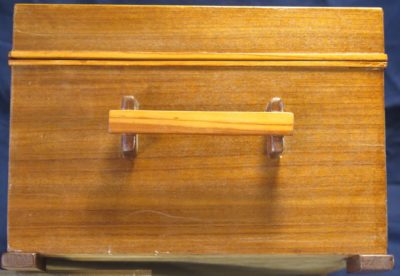
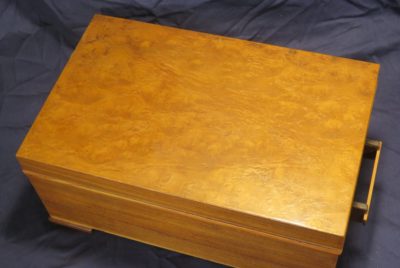
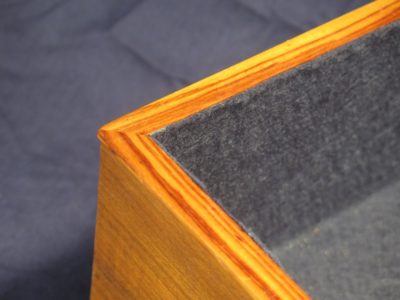
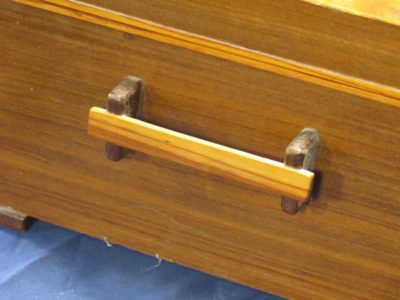
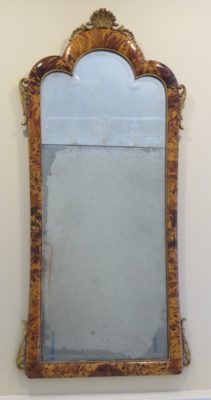

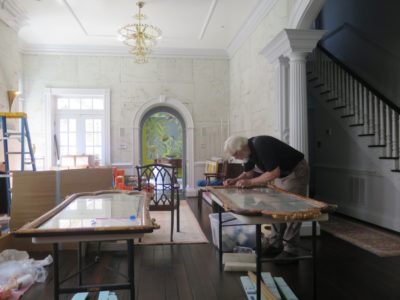

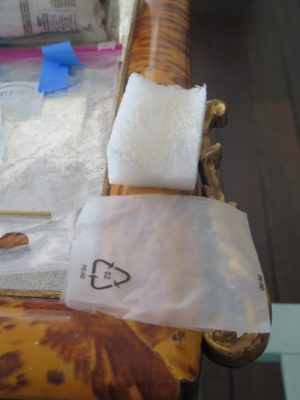
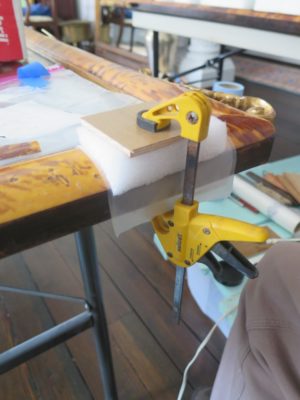


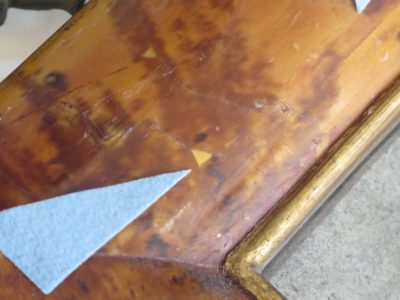
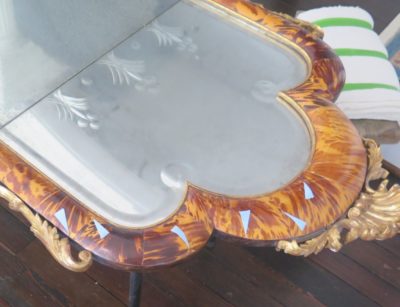
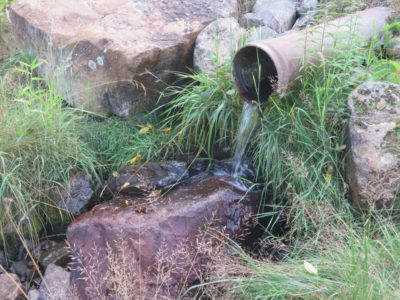


Recent Comments